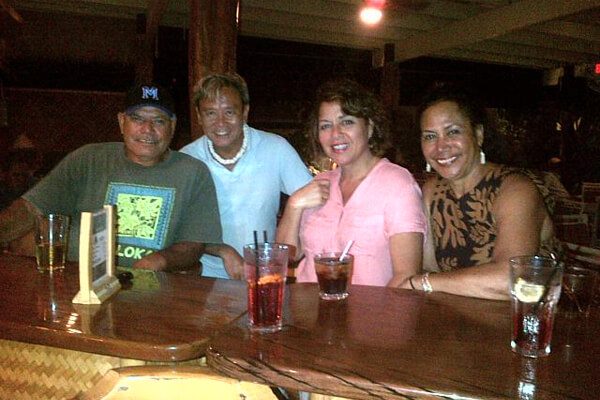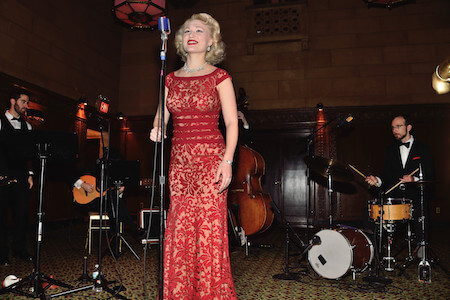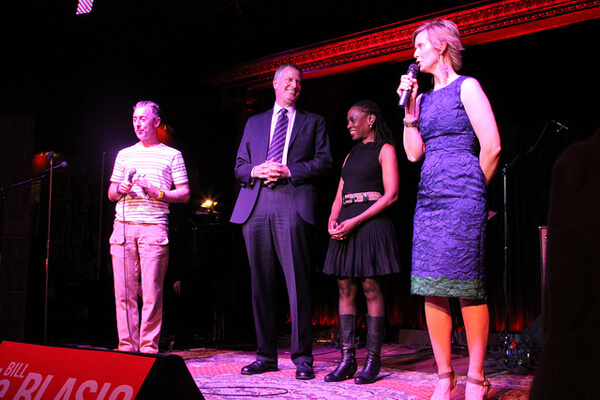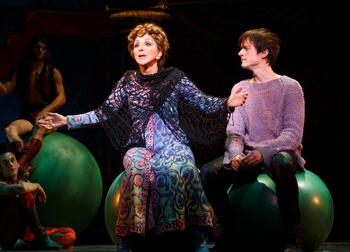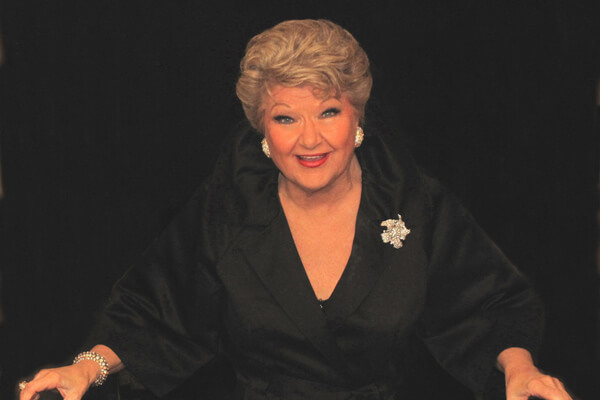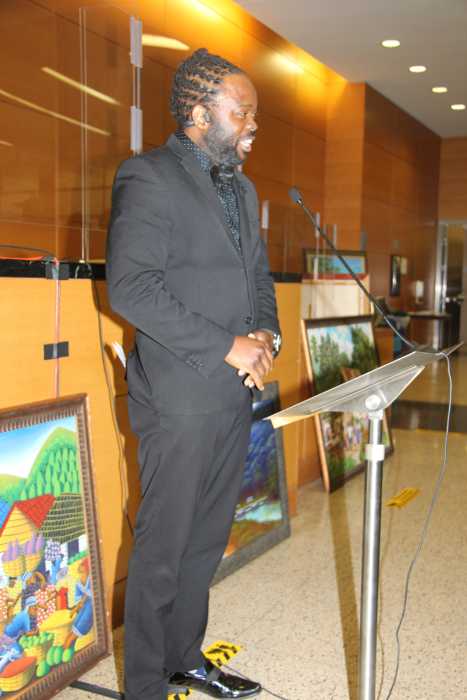The cliffs of Kalaupapa National Historical Park, the site of the storied leper colony. |Nathanael Boehm/ US NATIONAL PARK SERVICE
I missed Gay Pride in New York, but living right on Christopher Street with the hordes on my doorstep — rather than celebrating in Central Park, with space, freedom, and less coralling cops, as we used to in the good old days — gives me a worthy excuse, I feel. Instead, I caught my first Pride in Honolulu, which had that sweet hometown feel to it so many do outside the roiling Apple.
Of course, with so many gays and lesbians on the island, one could hope for a bigger turnout, but such is the state of affairs there, whether due to tourists being uninformed or, worse, to the unfortunate number of locals still sulking in the closet, given the still-prevalent mix of Asian repression and too much organized religion — that closet, by the way, often located in the family home too many have yet to move out of.
Hawaiian Pride, gay movie rarities, Burrows’ bounty
But it was great to see Peter Carlisle, marching proudly down Waikiki’s Kalakaua Avenue — the first sitting mayor of Honolulu to do so — and later greeting the crowd at the rally in magical Kapiolani Park. As is traditional in many parades, dykes on bikes assumed the lead spot, though Honolulu being, after all, the ultimate beach town, the contingent was somewhat more svelte than those seen in other burgs. Part of the fun, of course, was seeing the reactions those proverbial sun-burnt pink and porcine Midwestern tourists had toward them, as well as toward the plethora of Aloha Bears, orchid-bedecked trannies, and fabulously out and proud, heartbreakingly young school kids who followed.
At the rally, I happily re-met the beautiful Jade Le, who publishes and edits eXpression! Magazine, a terrific glossy monthly that covers gay life in Hawaii (issuu.com/expression_magazine), and also the vibrant members of the Playbuilders of Hawai’i Theatre Company (playbuilders.org), who were staging a production called “Yes… I am,” stories from Honolulu’s LGBT community.
Curtain call for Honolulu Theatre for Youth’s performance of Ka HÄlau Hanakeaka’s two plays about ancient heroes of legend. | DAVID NOH
While back home, I also caught a good production of “Godspell,” directed by my former classmate Bree Bumatai, and Honolulu Theatre for Youth’s presentation of Ka HÄlau Hanakeaka’s two plays about ancient heroes of legend, done entirely and most immersively, in Hawaiian. The gestural and vocal skill of the performers made the story lines clear even to those with no knowledge of the native language, and their physical beauty — especially the guys in the briefest of malos, or loincloths — gave them a real visual charge even on a completely bare stage.
The Honolulu Rainbow Film Festival, started by Jack Law (whom I profiled in the previous issue of Gay City News), began just days after Pride and was held at the Honolulu Museum of Art, one of the most beautiful in the world. I can safely attest that this six-day gay movie fest is now fully on par with any other happening anywhere.
Although I wasn’t able to attend many of the screenings, I did catch some worthies, like Travis Matthews’ “I Want Your Love,” which caused a stir when it was banned in Australia for its very graphic sex scenes — and subsequently staunchly defended by James Franco, who co-directed and appeared in Mathews’ “Interior. Leather Bar” about the so-called “lost footage” from William Friedkin’s scandalous “Cruising.” Although a tad too sparsely scripted for my taste, “I Want Your Love” is an effective study of a group of young friends dealing with one of their own leaving San Francisco for Ohio. It captured the fraught, desperate nature of 20-somethings going through seemingly earth-shaking, irrevocable changes with poignancy, and, as far as those sex scenes went, I think Mathews is on to something, with an audaciousness not seen since “Last Tango in Paris.” (I know people will cite the far flashier and more self-conscious “Shortbus,” but I somehow couldn’t bring myself to really care about anybody in that film.) No matter how deeply written or performed, there can be no more intimate exposure of characters than showing them screwing, and it’s a credit to the bravery of this cast that you were able to be introduced to them, get to know them, and then — rather thrillingly — really get to know them.
I was glad to see the festival include “Any Day Now,” which never got a Hawaii release and for which Alan Cumming was surely robbed of a Best Actor Oscar nom. Jeffrey Schwartz’s “I am Divine” was a wonderful warts-and-all 90-minute doc about that unparalleled, spherical diva, taking him/ her from notorious Baltimore shit-eater to Off-Broadway acclaim (in “Women Behind Bars” and “Neon Woman,” two unforgettably entertaining triumphs) to exhausted disco entertainer to ultimate glory in “Hairspray.” I do wish, though, that Whoopi Goldberg’s message on the funeral wreath she sent had been included: “See what a good review will do?” Arvin Chen’s “Will You Still Love Me Tomorrow?” was a charming entry from Taiwan, about a married man’s midlife gay crisis.
Uncle” Mac Poepoe, his wife Karen, and Kulia at Paddlers' Inn in Kaunakakai, Molokai.
While in Hawaii, I fulfilled a long-held dream by visiting the island of Molokai, one of the least developed and most natural in the Hawaiian chain. As a guest of legendary fisherman and conservationist “Uncle” Mac Poepoe (star of the upcoming PBS doc “Fishing Pono”), I was able to see the place in true, truly Hawaiian style, enjoying hospitality in a number of beautiful houses set on “homestead” land. In 1929, as recompense to Hawaiian natives, tracts of land were personally entrusted to them to be leased for the amount of 99 cents a year, or — in the case of certain beaches — for strictly private use. And what tracts they were!
We’re talking like 40 acres of pristine ranch land, all connected by red dirt back roads with no street lights, making the stars and moon at night seem so close. Garden groves are filled with mangoes, macadamia, gardenias, and breadfruit. And the beaches are white sand stretches with nary a footprint on them, where Poepoe works to protect the moi fish, favored by Hawaiian royalty and once on the verge of extinction.
Molokai is called “the friendly Isle” and it certainly was. Even the fish, curious to see humans, would come and nibble our feet, giving us the best free pedicures imaginable. The people were, of course, no less welcoming. Within minutes of meeting me, my new friend Kulia bestowed a precious triple strand necklace of rare Molokai shells upon me while describing an encounter she had with a haole (white) man she ran into at the supermarket. She thought she recognized him and launched into a lengthy discourse about their respective families before realizing he was a total stranger to her. “Eh, girl!” a pal said, rushing up to her afterward, “I didn’t know you knew the drummer from Grateful Dead!” — Bill Kreutzmann, who lives there.
A trip to Kalaupapa, the storied leper colony that Father Damien made famous, had been planned, but after realizing it was best to have more time than a mere day to explore it, I contented myself with an incredible view of it from a lookout. As tragic a place as it once was, there’s no denying that it sits on one of the most glorious bays on the planet — and yes, there’s scary talk about developing it. At the same lookout spot, I had a ball clambering over the famed “phallic rock,” which lived up to its hefty reputation. Supposedly, any female who mounts it becomes pregnant.
Back in the steamy city, I will be introducing two films (with drinkies!) at Strange Loop Gallery (27 Orchard St., btwn. Canal & Hester Sts.; 646-457-0859), under the auspices of the Bureau of General Services – Queer Division, as part of its Queer Film Summer Camp series (tinyurl.com/mw59gsx). On July 20, it’s “You Are Not Alone” (1977), Ernst Johansen and Lasse Nielsen’s tale of very young love, set in a Danish boys’ boarding school. Although I imagine the film was catnip for NAMBLA types, the complete acceptance with which these boys’ relationship is met by their peers as well as the film’s easy, non-prurient sensuality remain as breathtaking as when I first saw it in a dark age of gay films like “Taxi Zum Klo” and “Fox and His Friends,” which were rife with gloom and doom.
On July 27, I’ll be presenting Edmund Goulding’s “Riptide” (1934). A true auteur, the bisexual Goulding wrote and directed this, as he did so many other films — while also composing songs for them and doing Garbo’s hair! Ostensibly a glossy vehicle for Norma Shearer, who was “coming back” to the screen after a year’s absence due to health issues facing her producer husband, Irving Thalberg, it’s an almost surreally glamorous production that features a bold, delightful relationship between her two gay buddies, played by Skeets Gallagher and George K. Arthur. They were both straight actors, but nevertheless share a wealth of humorous affection for each other in the film.
Also in the cast is Ziegfeld girl/ chicest woman on screen Lilyan Tashman, an infamously predatory lesbian, with whom, it was said, no nice lady ever went to the powder room. To — literally — round things out, there’s the legendary Mrs. Patrick Campbell, Shaw’s original Eliza Doolittle, making with the pear-shaped tones and entrances.
A sultry title song — later covered by the great Robert Palmer — opens things and, almost as much as Goulding, genius costumer Adrian could also be considered an auteur of “Riptide” for the ultimate jaw-dropping wardrobe he provides Shearer, at her immaculate sleekest, including a masquerade bug ensemble. And, although the central romantic triangle among Shearer, Herbert Marshall, and Robert Montgomery is hetero, certain lines Goulding wrote, as when Montgomery woos her away from her husband with “We’re creatures of the night, you and I…” sound at once very F. Scott Fitzgerald and very gay.
Speaking of night creatures, don’t miss “When Fashion Danced,” an exhibit of the fashions of Stephen Burrows, at the Museum of the City of New York (1220 Fifth Ave. at 103rd St., through Jul. 28; mcny.org). One of the revolutionary American designers who won the “Battle of Versailles” at the fabled fashion show there in 1972, Burrows is dazzlingly represented by his innovatively cut and draped, brilliantly hued styles that were the pride of every hip girl of the era at Studio 54, from Cher to Grace Jones.
A major donor to this spirit-lifting evocation of the disco era is fashion editor Daniela Morera, whom I recall as the most unsung best-dressed woman of her time. The epitome of raffish Italian glamour, she’d saunter into Movie Star News, where I worked, to research articles for Italian Vogue decked in the most forward looks from Burrows and Issey Miyake, always fabulously accented with the fiercest vintage jewelry.
Contact David Noh at Inthenoh@aol.com and check out his blog at http://nohway.wordpress.com/.

